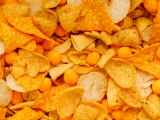Heme and non-heme iron. Some keys to avoid iron deficiency anemia

Did you know that more than 30% of the world's population suffers from iron deficiency anemia, according to the World Health Organization (WHO)? This health problem, which affects people of all ages, can manifest itself in the form of extreme fatigue, pale skin and difficulty concentrating. But why is it so common and what can you do to avoid it? In this article we'll explain everything you need to know about iron, from its types to the best foods to get it and practical tips to improve its absorption. Because iron health starts on your plate.
What is iron and why is it important in our diet?
Iron is an essential mineral for the human body. Its function is vital: to transport oxygen to tissues and organs. It is therefore crucial for muscle function, brain development and the immune system.
An iron deficiency can lead to iron deficiency anemia, characterized by fatigue, muscle weakness, headaches, hair loss, difficulty concentrating, memory loss, and, in severe cases, cardiovascular problems, among others. There are groups that are more prone to suffer the consequences of iron deficiency: pregnant women, people with poorly planned vegan or vegetarian diets, babies starting complementary feeding...
Heme and non-heme iron in the diet: how do they differ?
We can distinguish 2 types of iron, depending on its bioavailability. That is, depending on the amount of iron that our body is able to absorb and use. For example, many vegetable products are rich in iron, but the reality is that its absorption by the small intestine is not as much as that of some animal products. Let's see what types exist depending on the rate of absorption:
- Heme iron: It is found in foods of animal origin, such as red meat, poultry (turkey, chicken) and fish (salmon, sardines). It is the most easily absorbed, our body takes advantage of between 15% and 35% of heme iron ingested.
- Non-heme iron: It is present in foods of vegetable origin, such as legumes, whole grains and green leafy vegetables. Its absorption is much lower, ranging between 1% and 15%, depending on the food. Its absorption improves if it is combined with foods rich in vitamin C (oranges, strawberries, peppers).
What worsens iron absorption
There are certain foods that are great "enemies of iron" and that "sequester" it before it is absorbed. Coffee, tea and calcium are the foods responsible for inhibiting iron absorption. So avoid taking them together with iron-rich foods.
Top 10 foods with the most iron
- Beef liver: is one of the richest foods in iron, and also provides vitamin B12, folate and other nutrients that contribute to the formation of red blood cells.
- Clams, mussels and other shellfish: are excellent sources of iron and also provide protein and vitamin B12. The iron in clams is highly bioavailable, which means that the body can absorb it very easily.
- Legumes: Lentils, chickpeas and black beans are an excellent source of iron and vegetable protein, ideal for vegetarians or vegans.
- Spinach: Spinach is a vegetarian option rich in non-heme iron and is full of vitamin C, which helps improve iron absorption in the body.
- Pumpkin seeds: not only are they rich in iron, but they also contain magnesium, zinc and healthy fatty acids. These seeds are a nutritious snack that you can add to salads or yogurts to increase their nutritional value.
- Lean beef: Concentrated source of heme iron.
- Tofu: Made from soybeans, it is an iron-rich option, especially in vegan and vegetarian diets.
- Fortified cereals: A practical option to supplement dietary iron.
- Fish such as tuna and sardines: Good source of heme iron and healthy fatty acids.
- Quinoa: An iron-rich seed and a complete source of protein, which means it contains all nine essential amino acids. It is also a good gluten-free option for people with gluten intolerance.



Comments